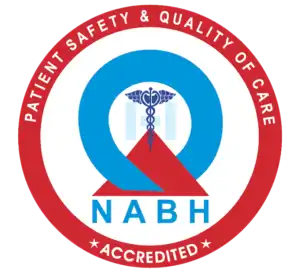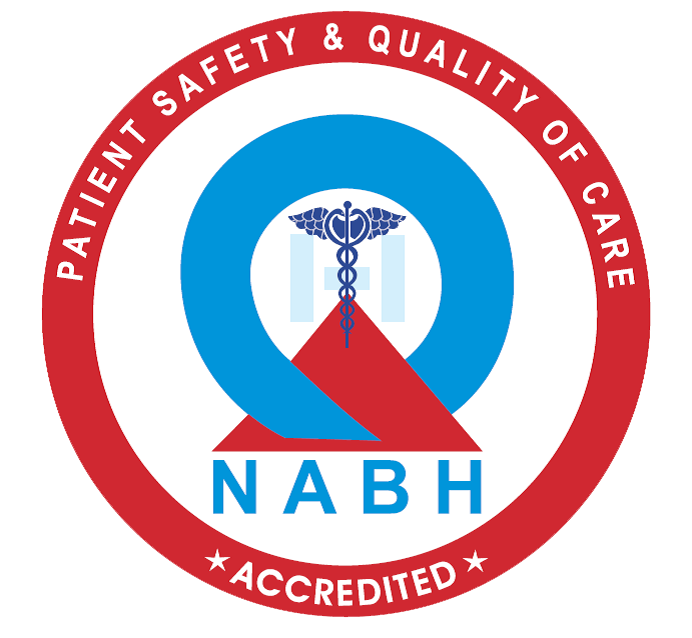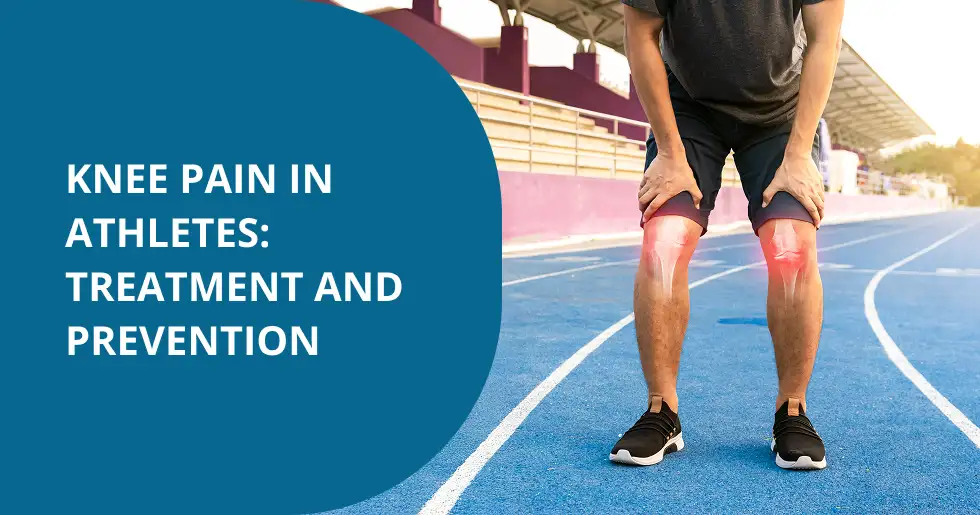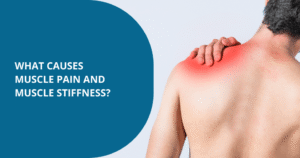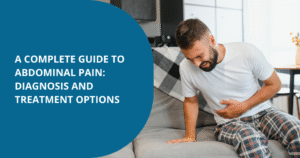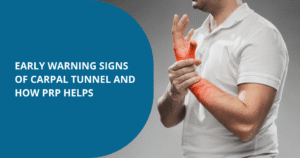Knee pain can disrupt your performance, hobbies or daily routine activities; especially if you are an athlete. From sudden twinges to persistent aches, the knee often bears the brunt of movement, stress or injury. In this blog, we will carefully explore the potential root causes, recognisable warning signs, treatment options, including advanced non-surgical knee pain treatment options and PRP procedures, recovery strategies with physiotherapy and key prevention tips for knee pain. Let us get started and get moving towards healthier knees without any complications.
Common Causes of Knee Pain in Athletes
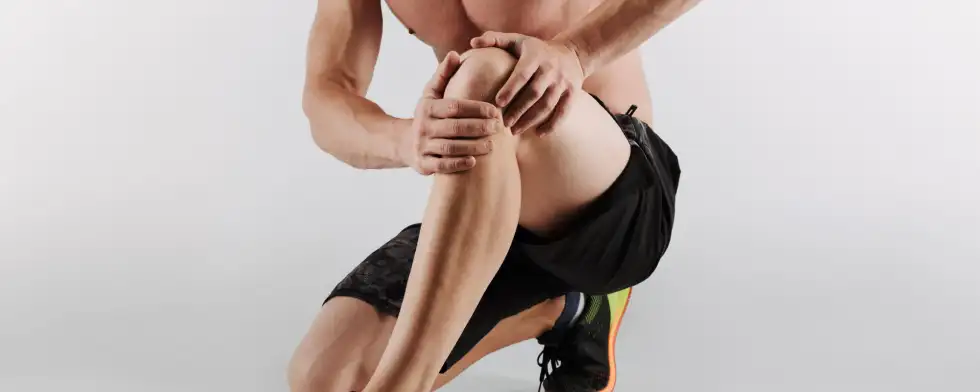
Athletes often face knee pain from several triggers –
- Overuse injuries such as runner’s knee (patellofemoral pain syndrome) and patellar tendinopathy, common in sports requiring jumping or repetitive movement
- Acute trauma such as ACL sprains or meniscus tears, during twisting or sudden direction changes
- Imbalance or poor biomechanics, including weak quadriceps or hamstrings, leading to joint strain
- Degenerative changes, especially if you’ve had a previous knee injury
Recognising and understanding the common causes of knee pain is the first step toward effective treatment—but recognising the warning signs is just as crucial.
Signs and Symptoms Not to Ignore
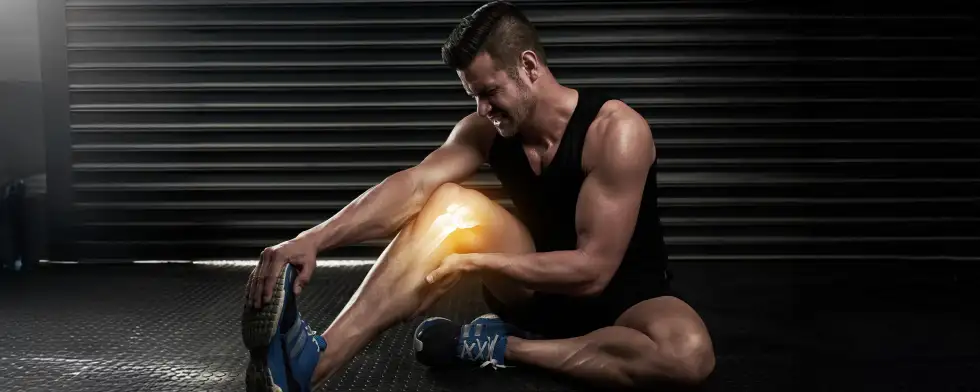
Recognising knee pain warning signs early can make all the difference and help prevent minor issues from becoming serious injuries. Let us take a closer look at the key signs and symptoms not to ignore.
- Pain at the front of the knee during or after activity, especially running or climbing stairs
- Swelling, stiffness, or a popping/locking feeling
- Persistent ache that worsens over time or limits performance
- Instability or difficulty keeping weight on the leg
Ignoring these symptoms could lead to further major damage or chronic issues.
Treatment Options for Knee Pain in Athletes
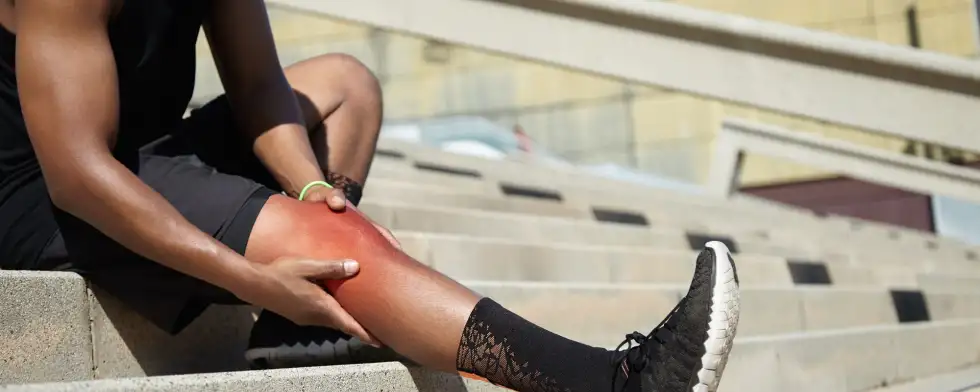
Non‑Surgical Therapies
For many athletes, surgery isn’t the first (or best) step. Instead, non-surgical interventions are prioritised, such as –
- Physiotherapy: Targeted exercises strengthen the muscles around the knee, particularly the quadriceps and hamstrings, improving joint stability and aiding knee pain relief.
- Regenerative treatments such as PRP (Platelet-Rich Plasma): A non-surgical knee pain procedure where your own blood is processed and injected into the injured area, harnessing growth factors to stimulate healing and tissue repair.
PRP Therapy in Athletes
PRP therapy offers many athletes a welcome knee pain remedy as it accelerates recovery from meniscus tears, tendinopathy, osteoarthritis and ligament injury, without the need for surgery. While studies vary, some demonstrate expedited return to sport and improved pain control.
Role of Physiotherapy in Recovery
Physiotherapy plays a vital role in the road to recovery and is often the first-line response for athletes:
- Strengthening: Eccentric training and muscle balance exercises reduce load on the knee and assist in knee pain procedure outcomes.
- Mobility and flexibility: Tailored stretching routines support recovery and help restore the full range of motion.
- Manual therapy: Includes soft tissue mobilisation, joint mobilisation and guided motion techniques for better knee function.
Rehabilitation often uses early gentle movement protocols, increasing strength and range over time.
Prevention Strategies for Athletes
Smart tips for knee pain prevention build strong, resilient knees. Here are some quick, simple and effective prevention tips for athletes against knee pain.
- Proper warm-up and cool-down routines, with dynamic stretching before exercise and static stretching afterward.
- Strength training for quads, hamstrings, calves and glutes to support joint stability and prevent overload injuries.
- Correct techniques in landing, cutting, pivoting and jumping to reduce undue stress on the knee.
- Weight management and nutrition, emphasising anti-inflammatory, nutrient-rich diets to promote joint health.
- Protective gear, such as well-fitted footwear, knee supports or braces, should be worn during high-impact sports
These strategies of effective knee pain prevention help in reducing your risk of flare-ups or injury recurrence.
When to See a Specialist?
Even with excellent preventive care, some situations warrant early specialist help. Here’s when you should immediately seek an expert consultation for knee pain –
- Persistent pain, discomfort or swelling lasting more than a few days
- Locking, catching, or a sensation of instability
- Pain that limits daily movement or sports participation
- No improvement after physiotherapy or rest
Early evaluation helps rule out more serious injuries like ACL tears or meniscus damage, allowing timely intervention and preventing long-term complications or chronic knee pain.
Conclusion
For athletes, knee pain can stall momentum or worse, sideline an entire season. Yet many dedicated and successful non-surgical paths exist. Through non-surgical and effective knee pain remedy options like physiotherapy and PRP procedures, athletes can often avoid surgery while achieving substantial knee pain relief. At Epione Bangalore, we combine evidence-based care, athlete-centred support and regenerative techniques to help you get back in the game.
By understanding root causes, staying alert to symptoms, following physiotherapy routines and adopting strong preventative habits, you can manage knee pain effectively. If you are looking for a qualified team to plan your recovery or prevention strategy or to explore PRP as a modern, non-surgical alternative, Epione Bangalore is here to help.
Book your consultation session today!
